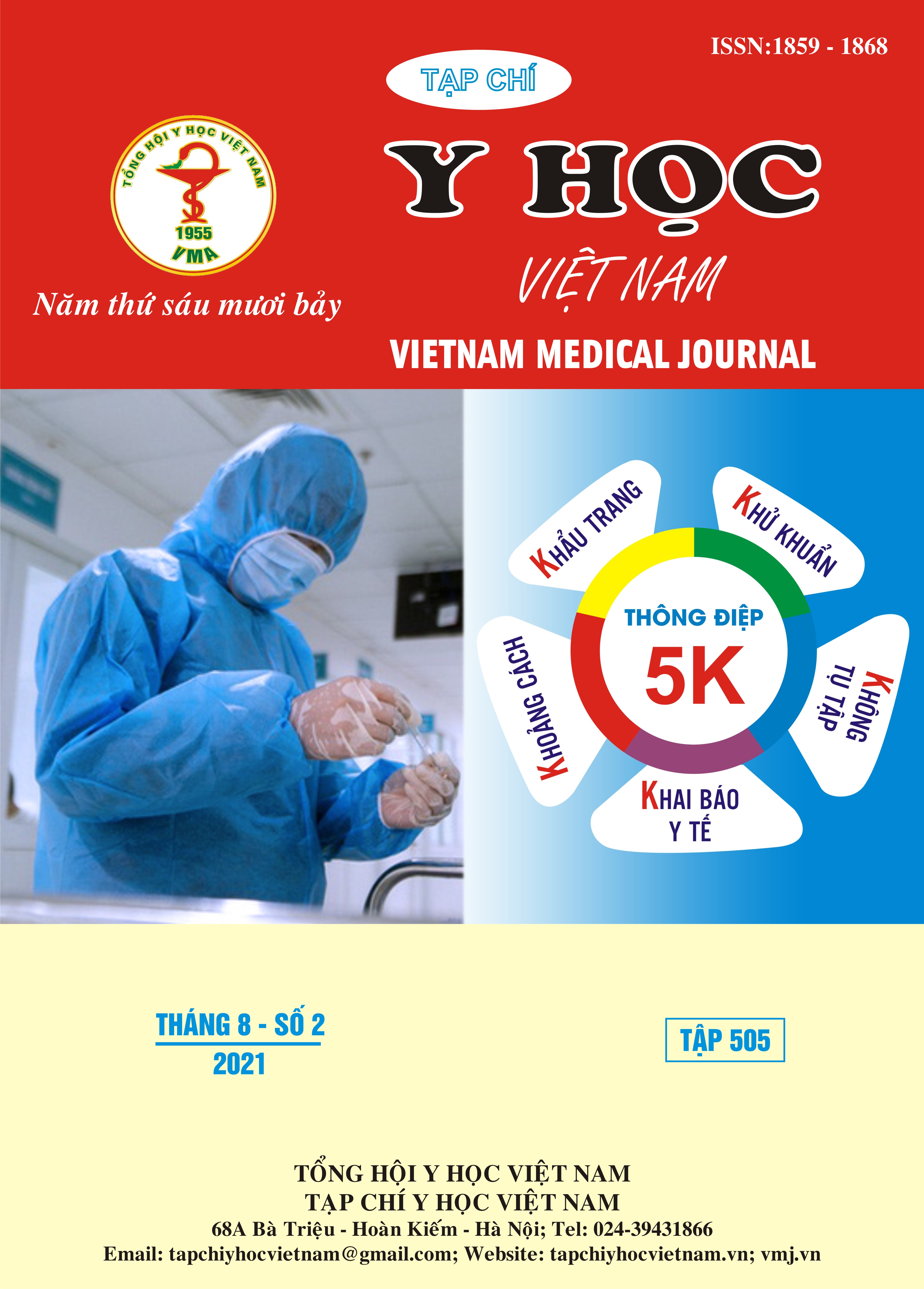OUTCOMES OF SKULL FRACTURE TREATMENT AT THAI BINH GENERAL HOSPITAL
Main Article Content
Abstract
Objectives: To evaluate the rate, clinical symptoms, computed tomography images and treatment outcomes of 68 patients with skull fracture. Methods: A cross-sectional descriptive study was conducted among 68 patients with skull fracture treated at Neurological and Spinal Surgery Department at Thai Binh General Hospital from February to September 2020. Results: 68 traumatic skull fracture patients out of a total of 534 craniocerebral trauma patients in a period of 8 months, accounting for 12.7%, including 56 males, forming 82.4%; 12 female (17.6%); the youngest: 3; The oldest: 96; Median age: 33.26 ± 22.15. Traffic accidents constituted 63.2%; domestic accidents (29.5%); occupational accidents (4.4%); violence (2.9%). Clinical symptoms: headache comprised (88.2%); vomit (29.4%); head wound (33.8%); scalp swelling and hematoma (27.9%); raccoon eyes (20.6%). Most of the patients were in minor status (GCS: 14-15 points: 91.2%). Computed tomography showed: Cranial dome facture (79.4%), skull base fracture (20.6%); epidural hematoma (39.7%), acute subdural hematoma (33.8%), subarachnoid hemorrhage (27.9%). The majority of the patients received conservative treatment which was contained in (88.2%), only (11.8%) underwent surgery. The majority of patients had good outcomes (97.1%). Conclusion: Traumatic skull fracture accounted for the rate of (12.7%), common in men, mainly caused by traffic accidents.
Article Details
Keywords
Skull fracture, traumatic brain injury, traffic accident
References
2. Ernest J. Bobeff và cộng sự (2019), Predicting Outcome and Conservative Treatment Failure in Patients with Skull Fracture after Traumatic Brain Injury: A Retrospective Cohort Study. J Neurol Surg A Cent Eur Neurosurg, 2019 Nov; 80(6):460-469. doi: 10.1055/s-0039-1692672. Epub 2019 Aug 29.
3. Wei-Chun Tseng và cộng sự (2011), The Association Between Skull Bone Fractures and Outcomes in Patients With Severe Traumatic Brain Injury. The Journal of TRAUMA® Injury, Infection, and Critical Care, Volume 71, Number 6, December 2011. DOI: 10.1097/TA.0b013e31823a8a60.
4. M.Á. Muoz-Sánchez và cộng sự (2005), The significance of skull fracture in mild head trauma differs between children and adults. Childs Nerv Syst (2005) 21:128–132. DOI 10.1007/s00381-004-1036-x.
5. Ahmad Faried và cộng sự (2019), Correlation between the skull base fracture and the incidence of intracranial hemorrhage in patients with traumatic brain injury. Chinese Journal of Traumatology.Volume 22, Issue 5, October 2019, Pages 286-289. DOI: 10.1016/j.cjtee.2019.05.006


